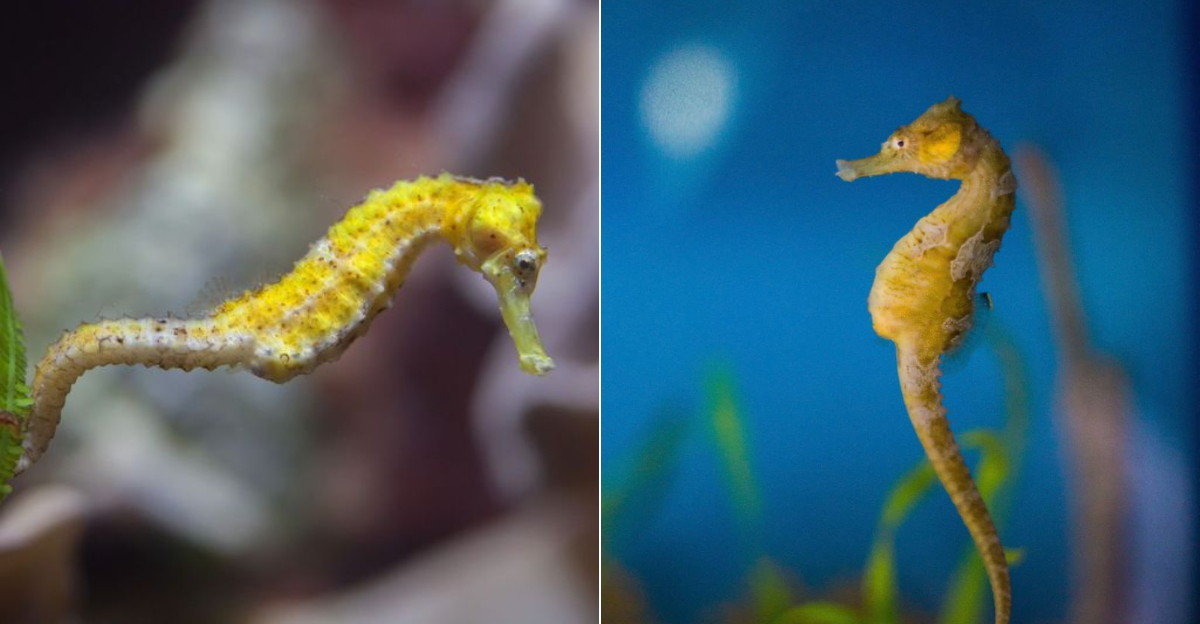The warm, shallow waters of Florida’s Gulf Coast harbor a surprising diversity of seahorses. These magical creatures, with their horse-like heads and curled tails, are masters of disguise who blend perfectly with seagrass beds and coral reefs.
While tiny in size, seahorses pack a punch when it comes to fascinating behaviors… the males even give birth to the babies!
1. Lined Seahorse
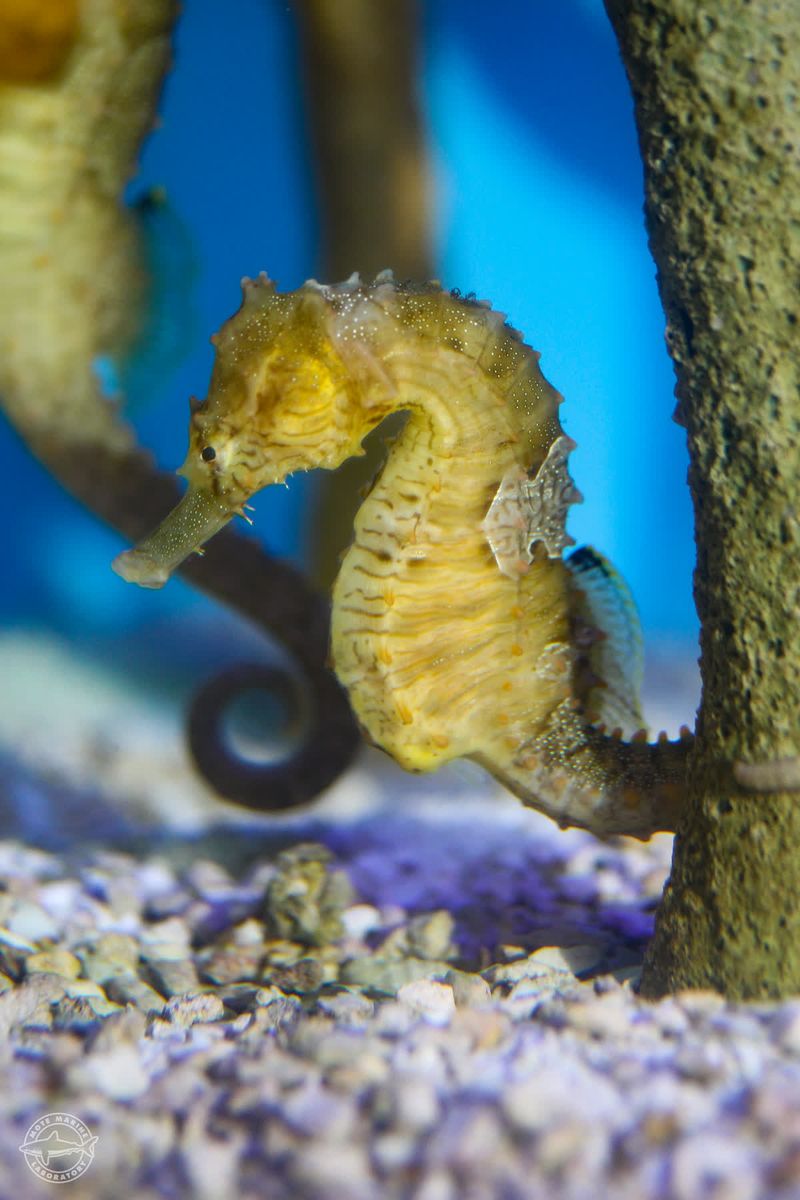
Lined seahorses can change colors faster than a teenager trying on clothes at the mall. These 7-inch wonders showcase yellow, orange, red, and even black hues depending on their mood or surroundings.
Sporting distinctive dark lines that run along their bodies (hence the name), these seahorses are the most commonly spotted species in Florida’s waters. They’re particularly fond of seagrass beds where they anchor themselves with prehensile tails.
The romantic souls of the sea, lined seahorses mate for life and perform enchanting daily dances with their partners. Males carry up to 1,500 babies in their pouch before giving birth!
2. Slender Seahorse

Graced with an extraordinarily elongated snout, the slender seahorse resembles a living needle threading through Gulf waters. Their stretched-out faces aren’t just for show, they’re precision feeding tools that work like underwater vacuum cleaners, sucking up tiny crustaceans with lightning speed.
Growing up to 6 inches tall, these delicate creatures prefer deeper waters than their cousins. Their slender profile helps them hide among tall seagrass blades where they sway with ocean currents.
Unlike flashier seahorse varieties, slender seahorses typically sport subtle tan and brown patterns that provide perfect camouflage. They’re notoriously shy and will turn their backs to observers, making a spotting in the wild a true underwater treasure hunt!
3. Dwarf Seahorse
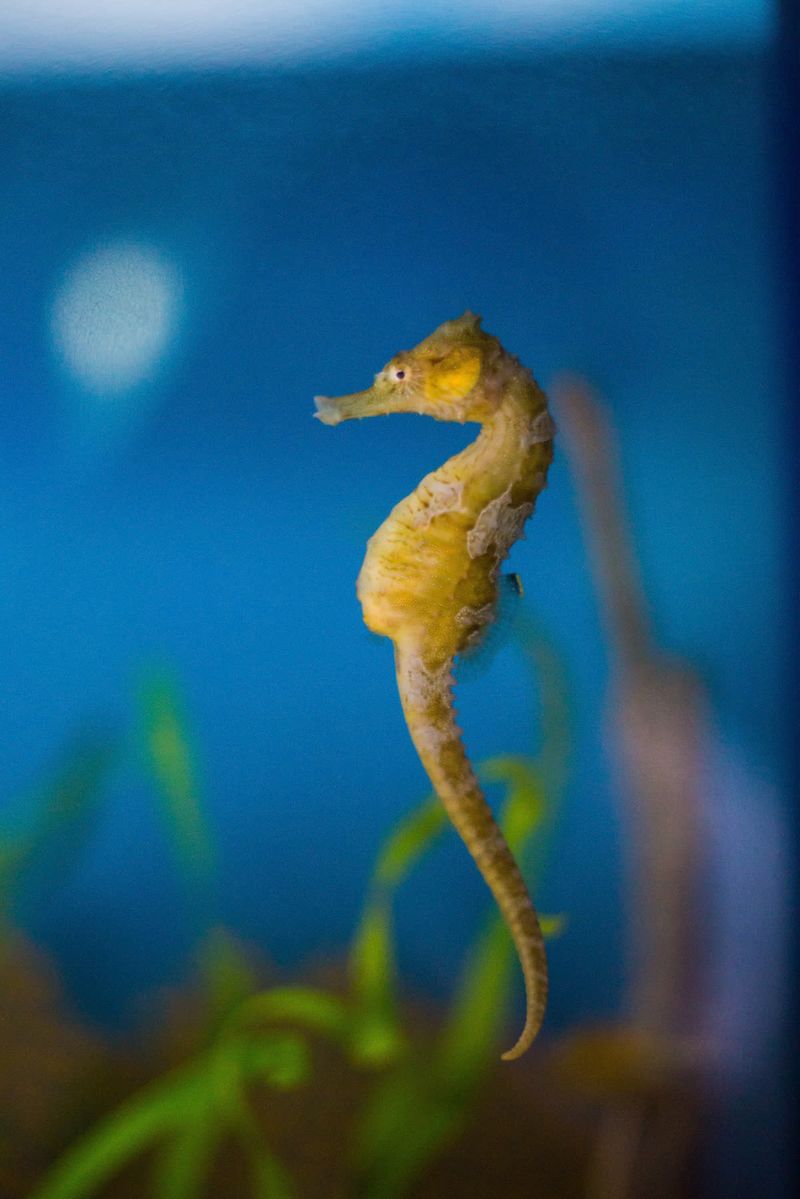
Small enough to dance on a quarter, dwarf seahorses rarely grow larger than an inch! These miniature marvels hold the title of slowest-swimming fish in the world, moving at a glacial pace of about 5 feet per hour.
Found exclusively in shallow seagrass meadows, these pint-sized creatures thrive in Florida’s warmest coastal waters. Their diminutive stature makes them perfect residents of turtle grass beds, where they grip onto blades with their tails to avoid being swept away by currents.
Females deposit eggs into the male’s specialized brood pouch during an elaborate courtship ritual that can last for days. After a pregnancy lasting about two weeks, proud papa seahorses release fully-formed mini replicas of themselves into the water!
4. Big-belly Seahorse
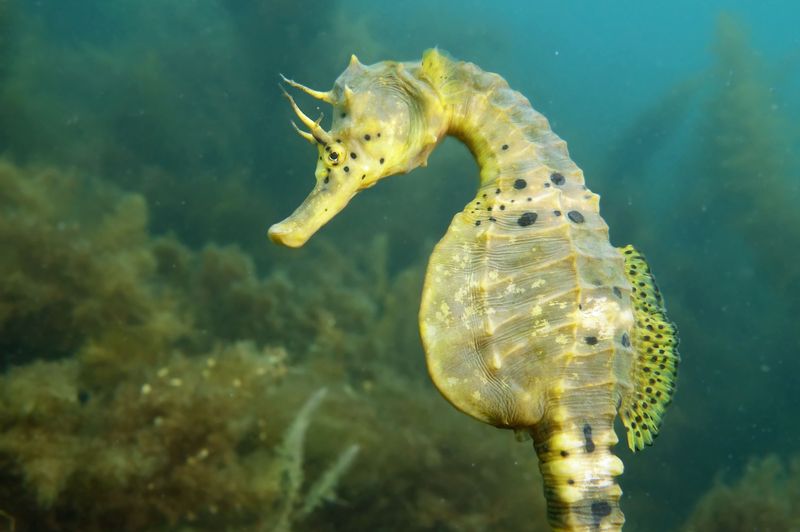
Sporting a comically rounded midsection that looks permanently pregnant, the big-belly seahorse makes quite the impression in Gulf waters! Don’t be fooled by their portly appearance, these rotund swimmers are surprisingly agile when hunting for tasty copepods and tiny shrimp.
As one of the larger seahorse species found along Florida’s coast, they can grow up to 14 inches tall. Their distinctive pot-bellied profile makes them easy to identify, even for novice marine spotters.
Fascinatingly, their bulbous appearance isn’t just for show, it houses an extra-large brood pouch that can carry hundreds more babies than their slimmer relatives. These devoted dads experience genuine contractions during birth, sometimes laboring for hours to deliver their tiny offspring into the Gulf waters!
5. Barbour’s Seahorse
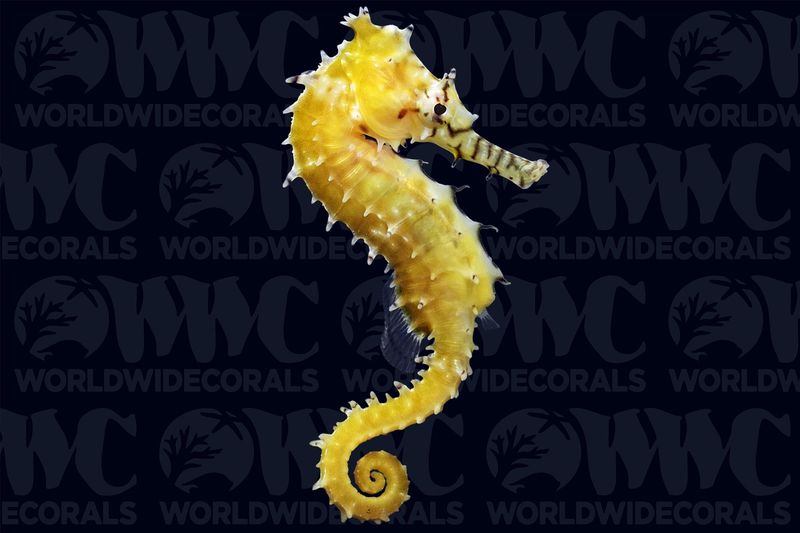
Rarely seen but greatly admired, Barbour’s seahorses are the enigmatic celebrities of Florida’s underwater world. Their striking reddish-brown bodies adorned with white spots make them look like swimming constellations against the blue Gulf backdrop.
These elusive creatures prefer deeper waters around coral reefs and rocky outcroppings, making them a special treat for divers who venture beyond the shallows. Unlike their relatives who stay put, Barbour’s seahorses are known to hitchhike on floating seaweed mats, traveling impressive distances across the Gulf.
Scientists are particularly fascinated by their unique hunting technique—they can rotate each eye independently, allowing them to track prey in two different directions simultaneously! This extraordinary adaptation gives them a significant advantage when stalking the tiny crustaceans that make up their diet.
6. Kuda Seahorse

Gleaming like underwater treasure, the golden-hued kuda seahorse brings a touch of tropical splendor to Florida’s southern Gulf regions. These magnificent creatures flash brilliant yellow and orange tones that seem to capture sunlight even in deeper waters.
Originally from Indo-Pacific waters, kudas have established themselves along Florida’s coast, particularly around artificial reefs and pier pilings. Their impressive size (reaching up to 12 inches) makes them the gentle giants among local seahorse populations.
Kuda seahorses possess remarkably long lifespans for their size, with some individuals living up to 6 years in the wild! Their courtship rituals are particularly elaborate, featuring synchronized swimming and color-changing displays that rival the most spectacular Broadway performances.
7. Spotted Seahorse
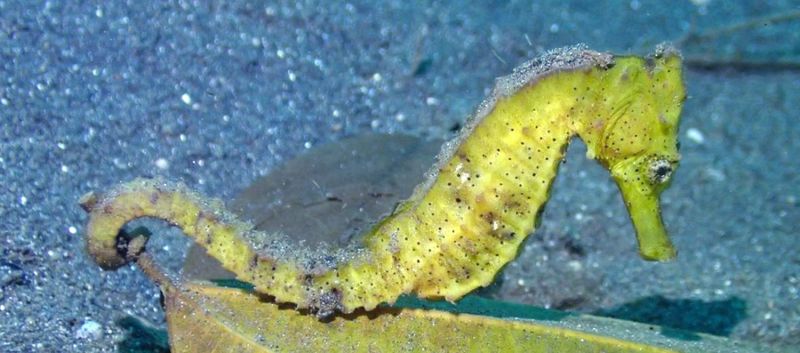
Freckled like a sun-kissed redhead, spotted seahorses flaunt their distinctive polka-dot patterns throughout Florida’s coastal waters. No two individuals share the same spot arrangement, making each one as unique as a human fingerprint!
These mid-sized seahorses (growing 4-6 inches tall) thrive in mixed habitats from shallow grass beds to deeper reef structures. Their adaptable nature allows them to change their base color from pale yellow to deep brown, though their signature spots always remain.
Remarkably social for seahorses, spotted varieties often form small groups called “herds” that gather around prime feeding grounds. They communicate through subtle color flashes and body postures that scientists are only beginning to decode.
8. Pacific Seahorse
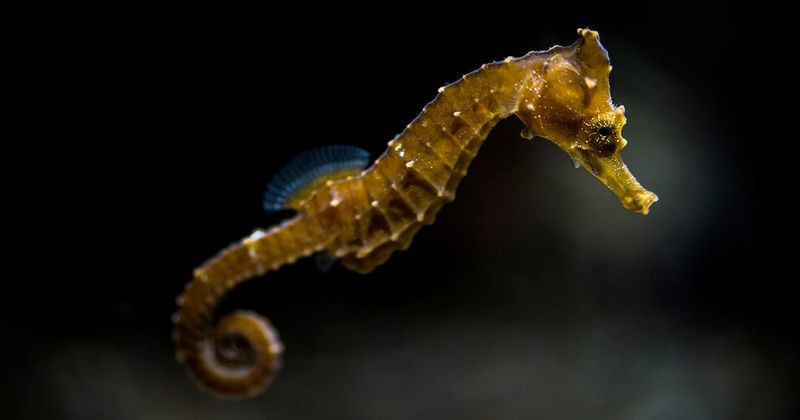
Vacationing from western waters, Pacific seahorses occasionally appear along Florida’s southernmost Gulf shores during particularly warm years. These colorful visitors (sporting sunset oranges and fiery reds) stand out dramatically against Florida’s typically muted underwater landscape.
As the only seahorse species found in the eastern Pacific, their presence in Florida represents an impressive oceanic journey. Marine biologists believe strong currents during El Niño years help transport these adventurous travelers to the Gulf Coast.
Exceptionally large by seahorse standards, Pacific varieties can reach a whopping 12 inches in height! Their distinctive spiky crowns (called coronets) resemble tiny royal headpieces, earning them the nickname “sea kings” among divers.
9. Common Seahorse
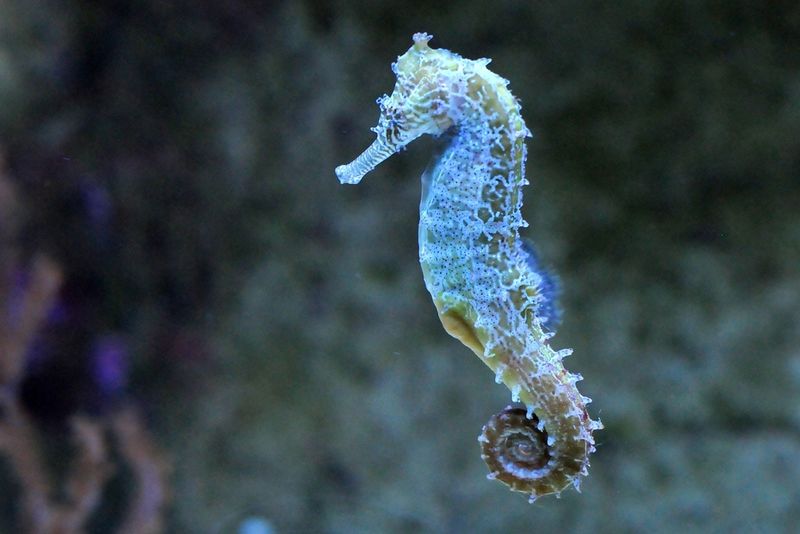
Despite its unassuming name, there’s nothing ordinary about the common seahorse! These versatile creatures showcase an impressive rainbow of colors, from ghostly white to vibrant purple, depending on their specific habitat within Florida’s diverse Gulf environments.
Thriving in everything from murky estuaries to crystal-clear reef systems, common seahorses are the ultimate underwater survivors. Their remarkable ability to match virtually any background makes them nature’s premier masters of camouflage.
Female common seahorses are unusually competitive for mates, engaging in fierce morning competitions to win male attention. Once paired, couples perform synchronized “greeting dances” each morning, strengthening their bond
